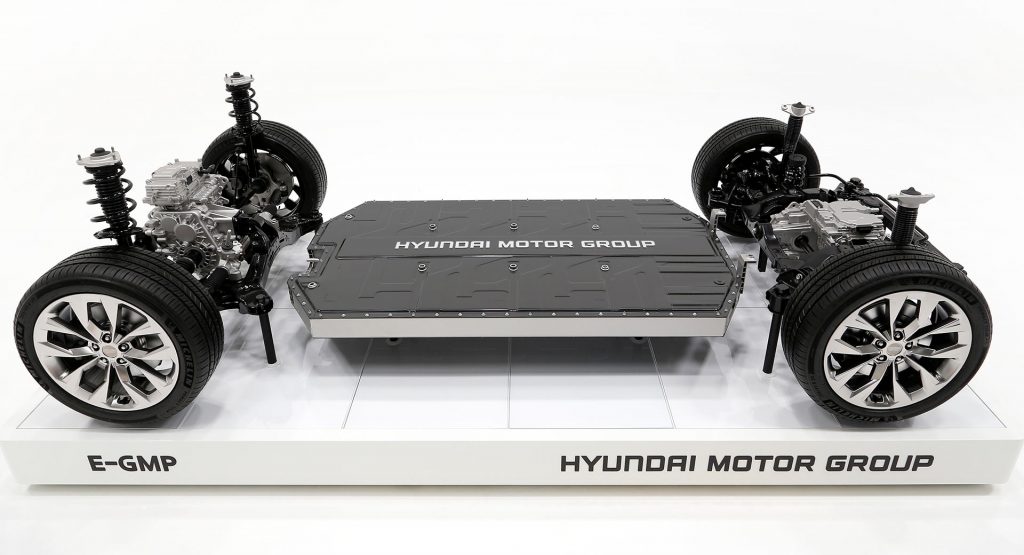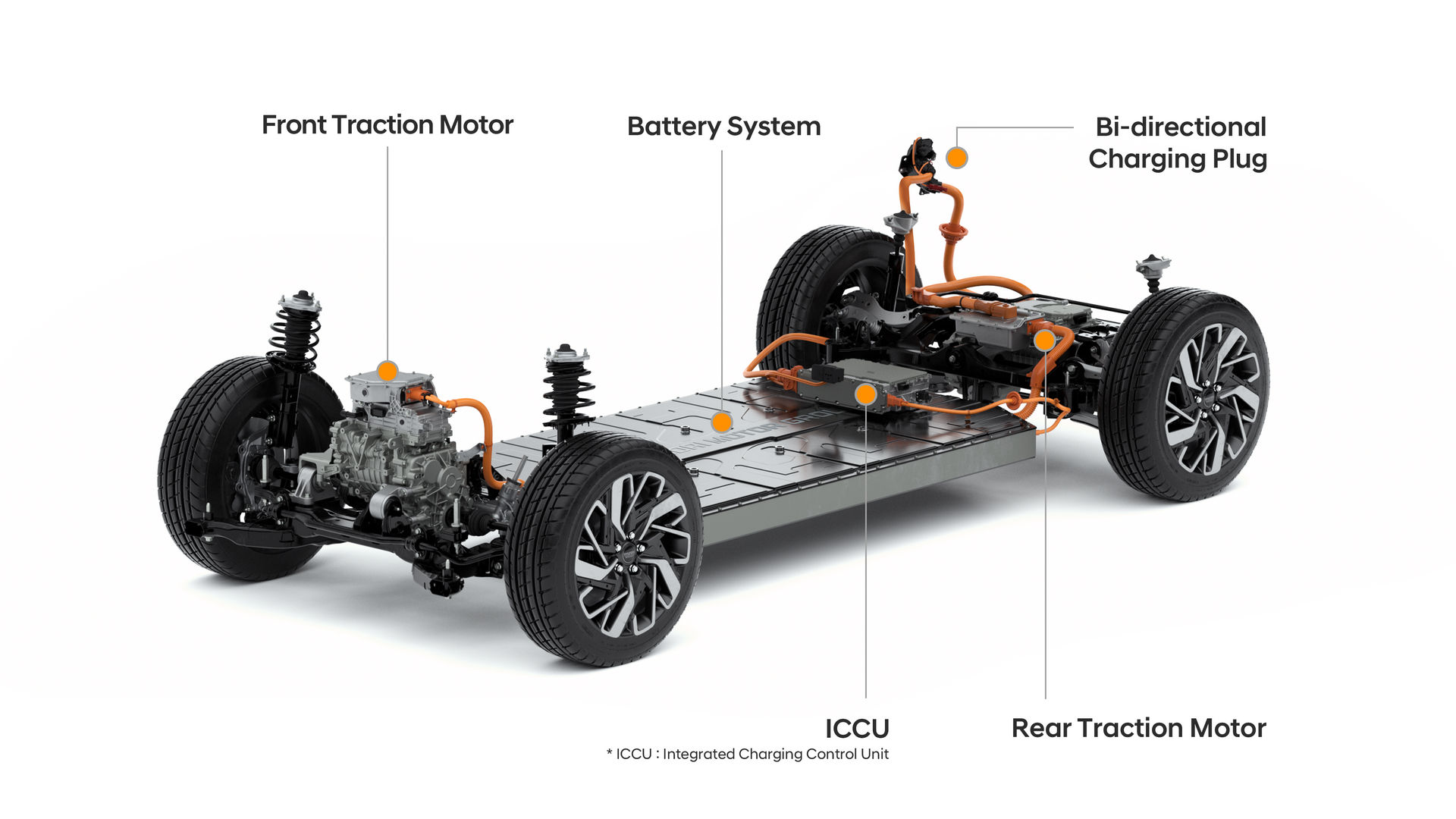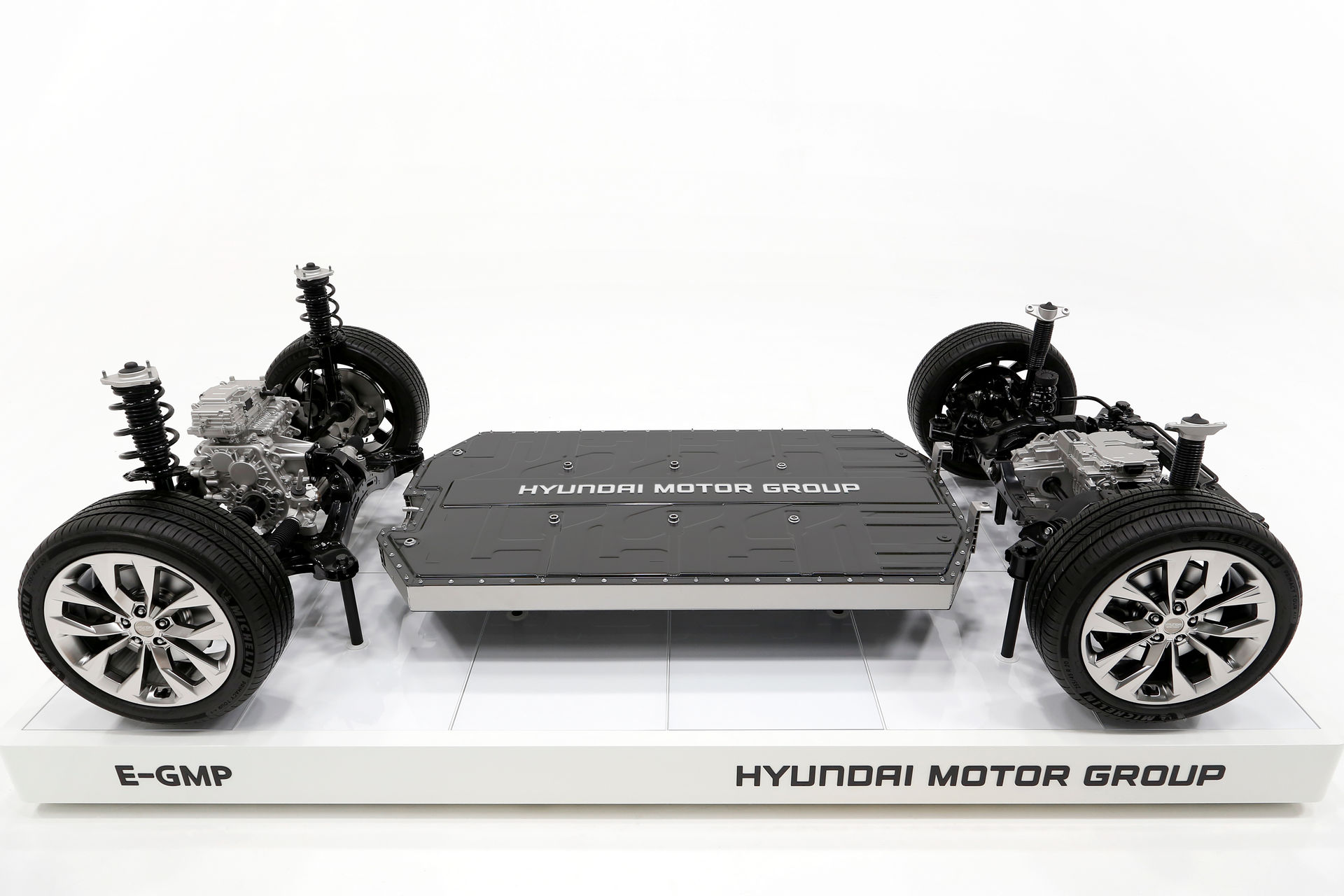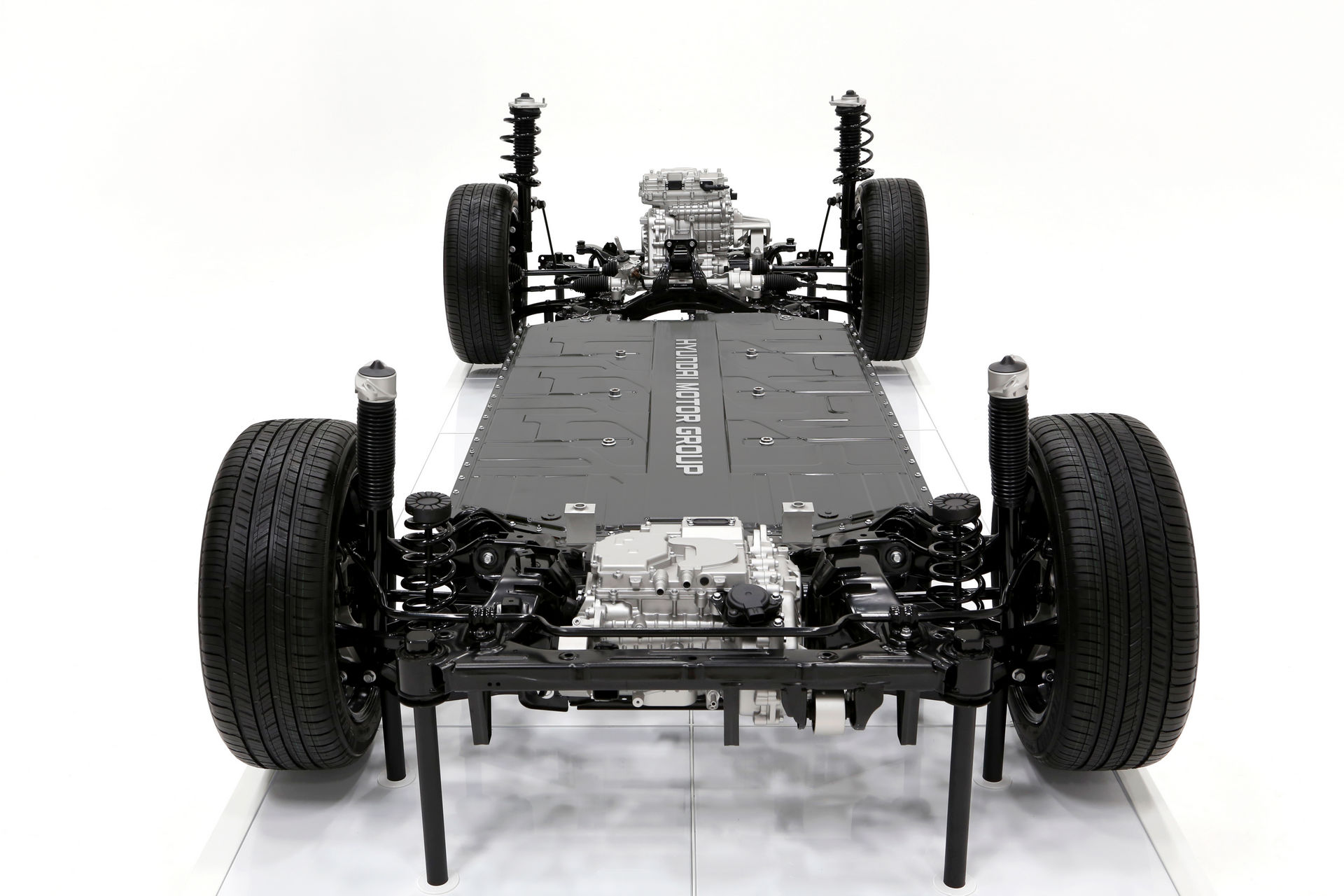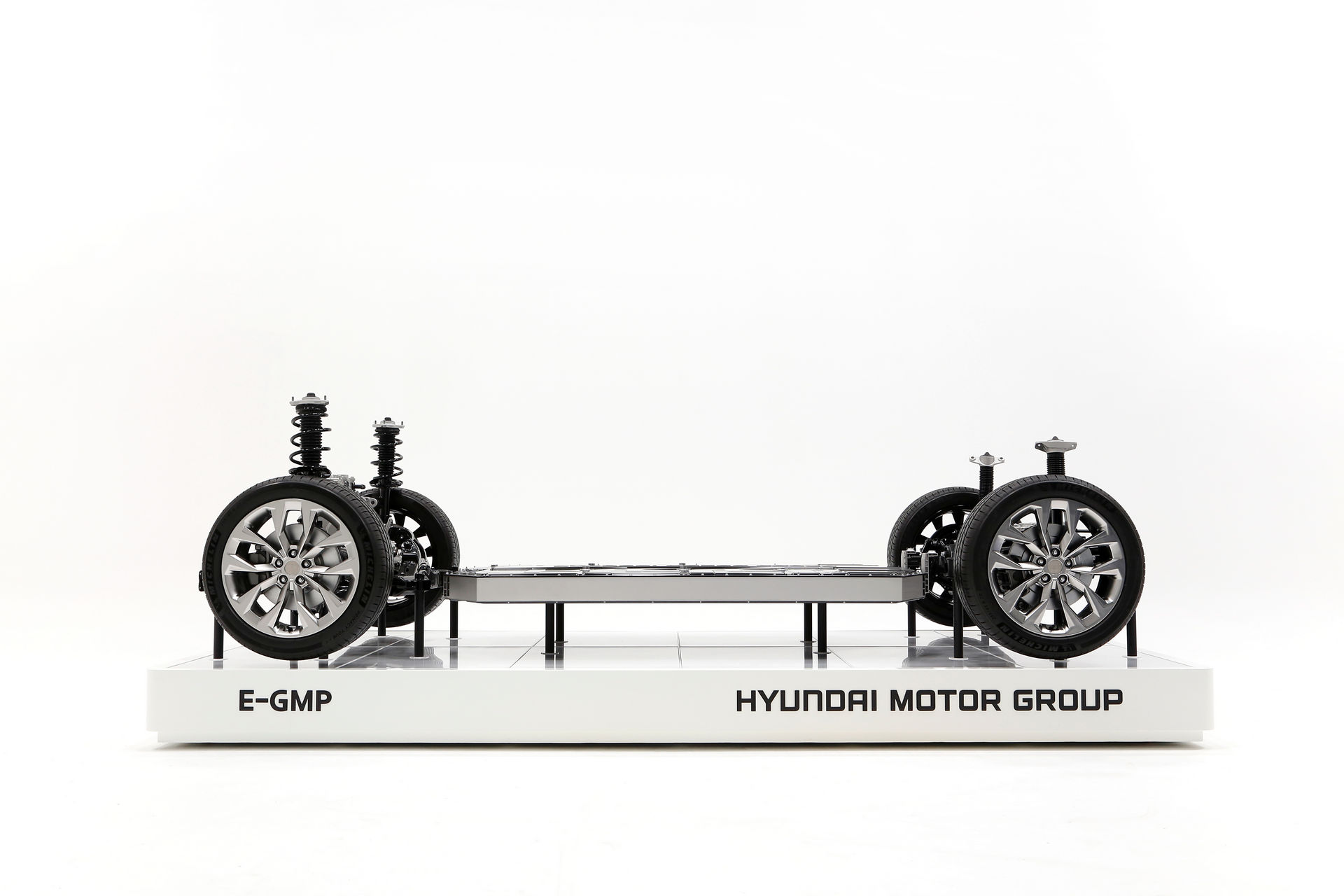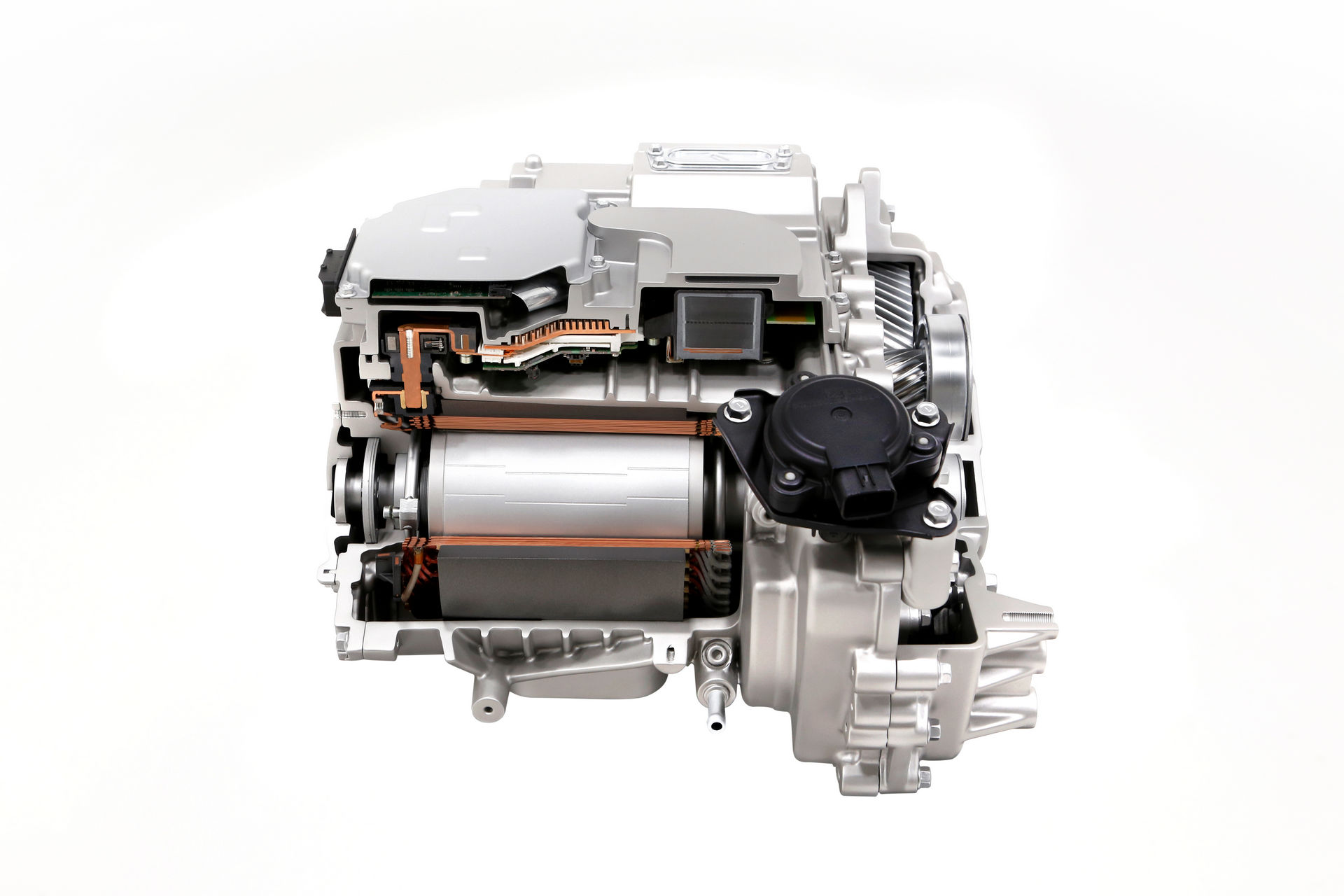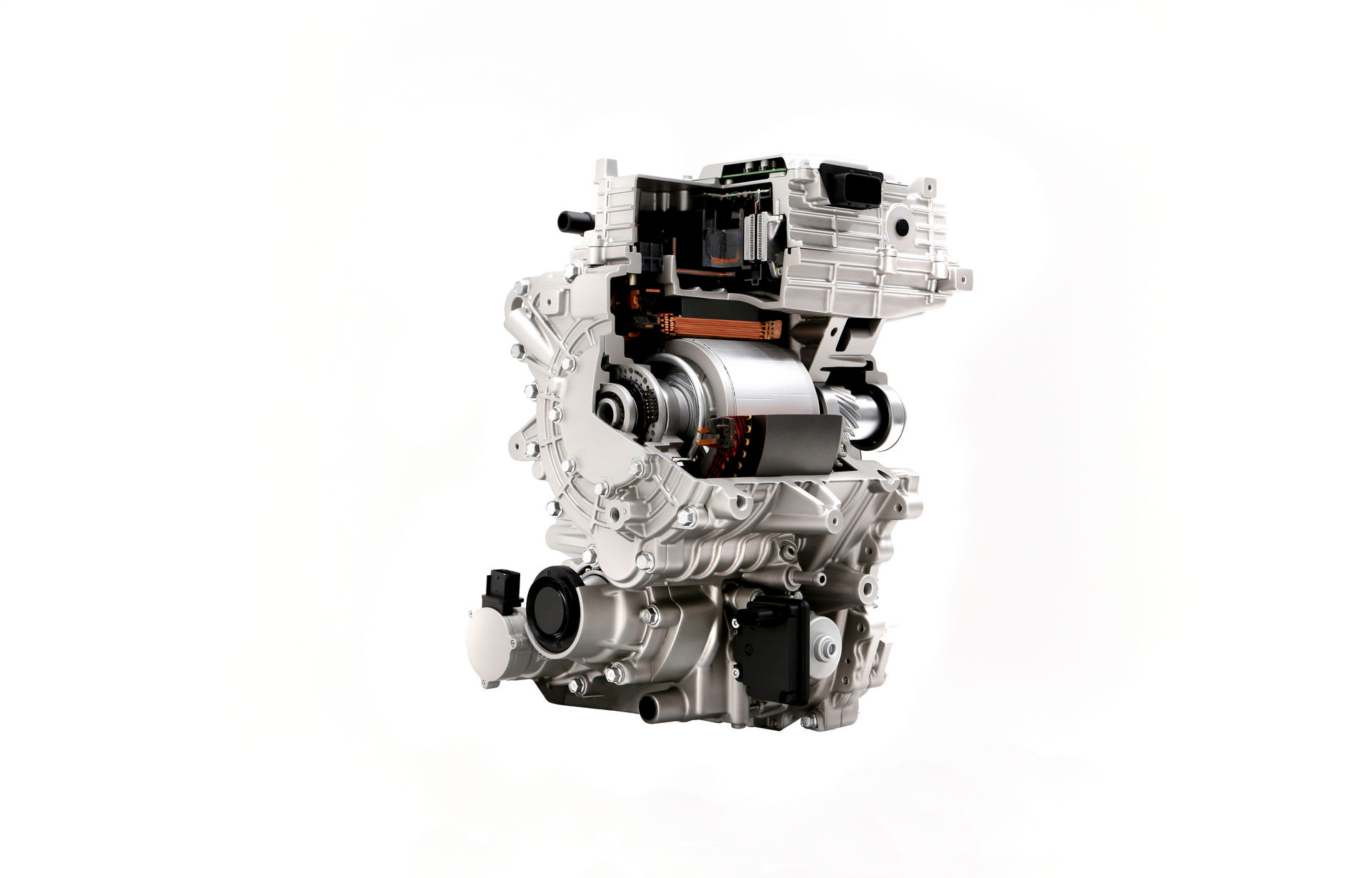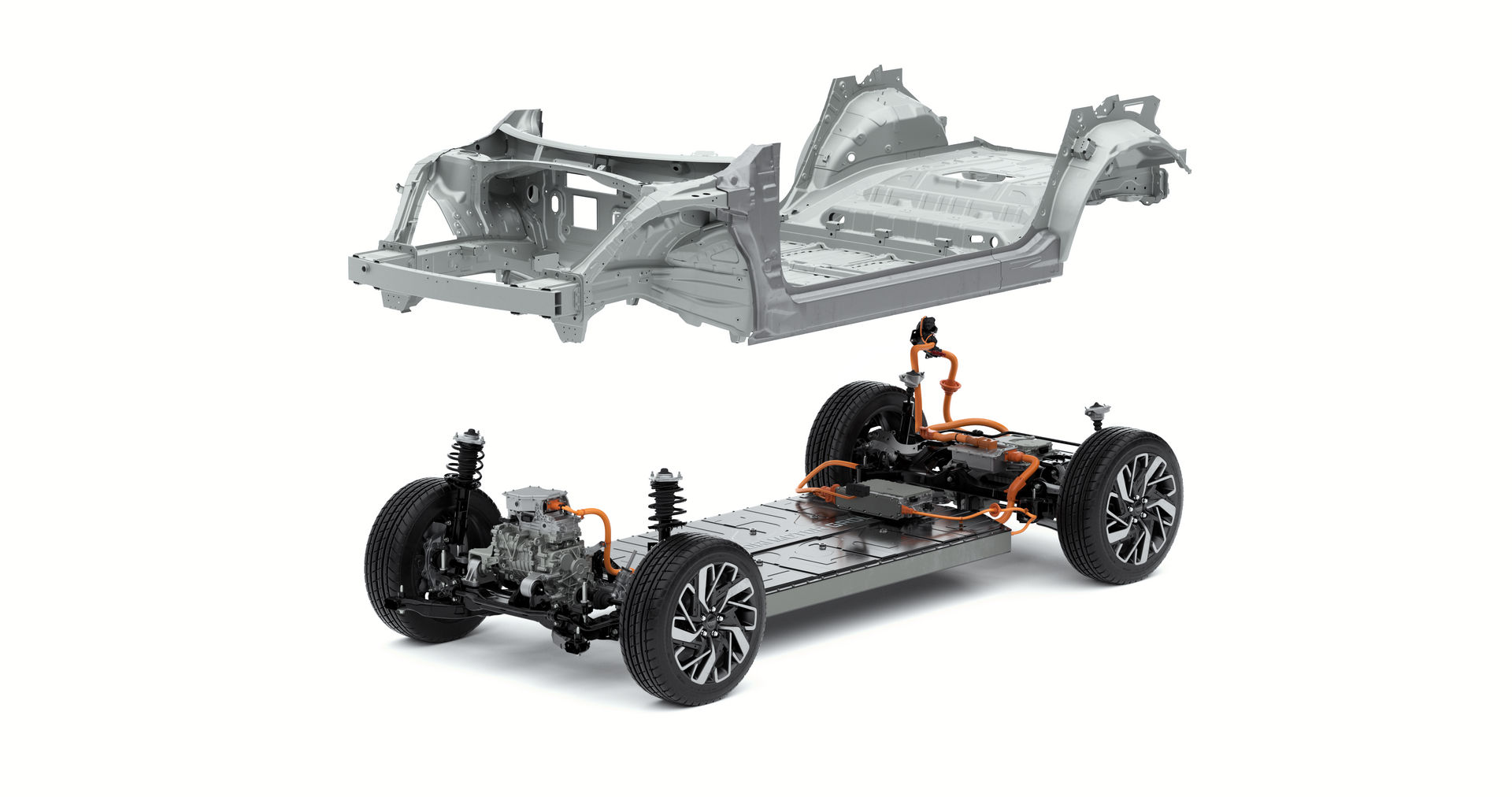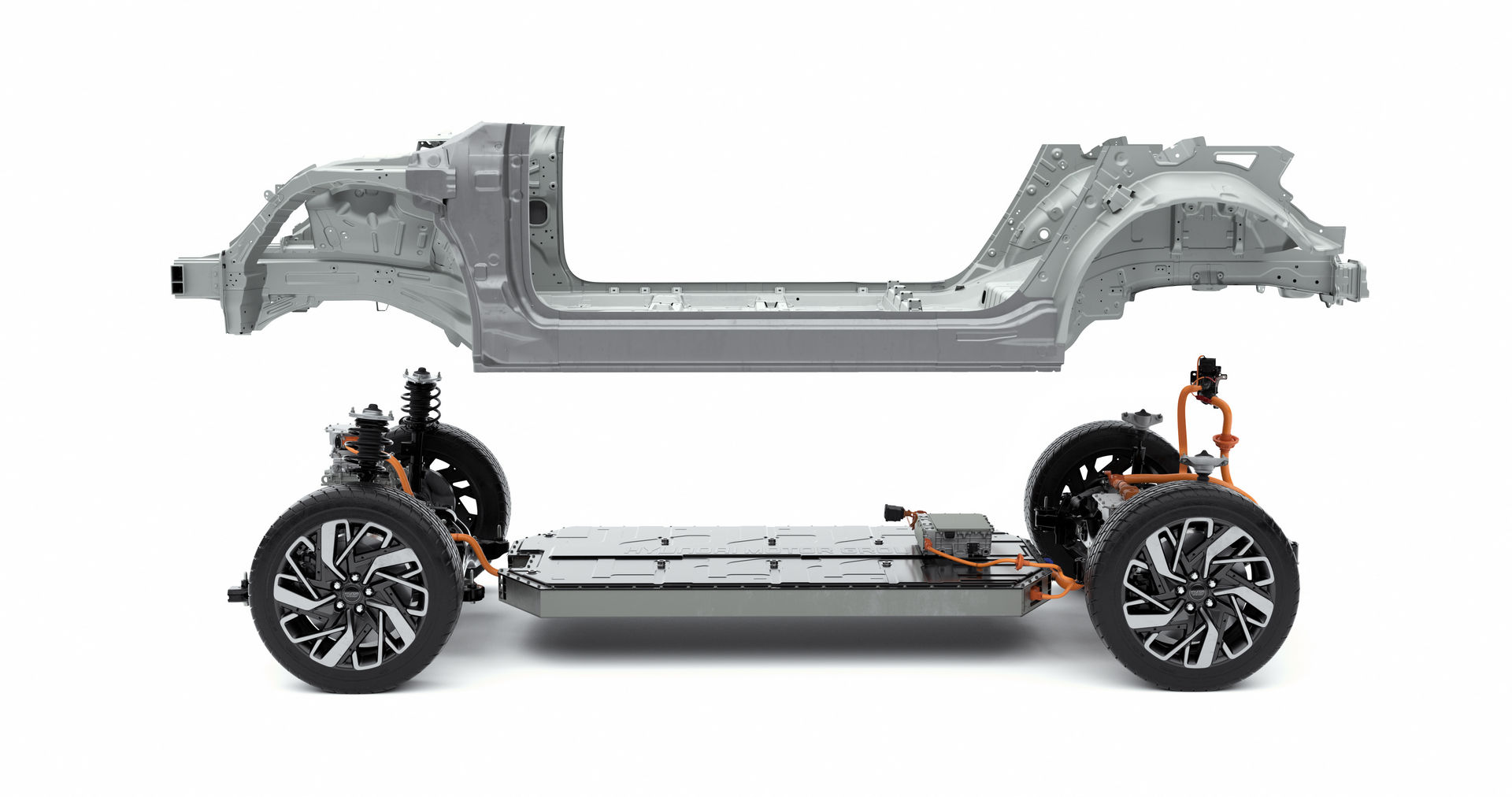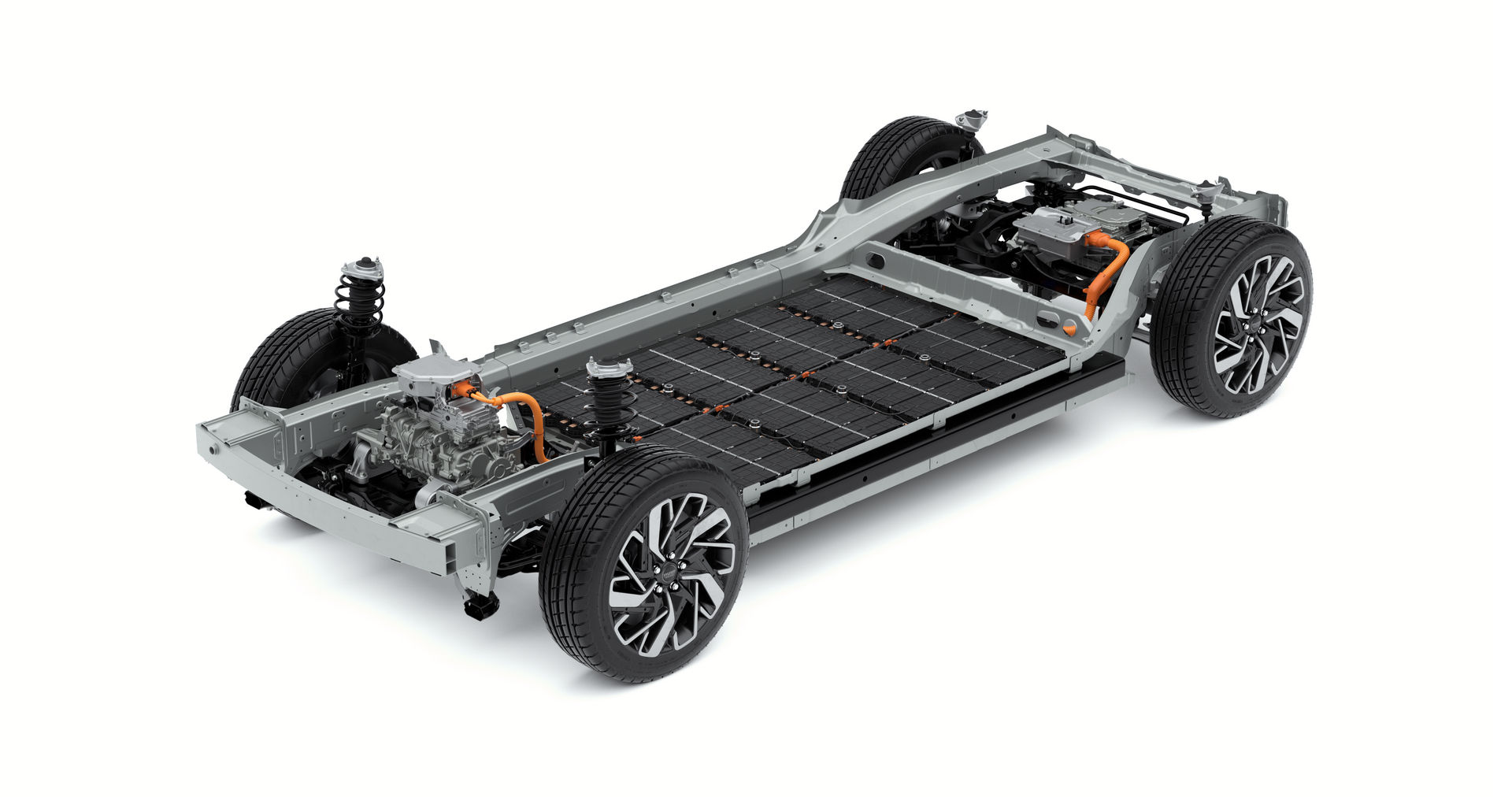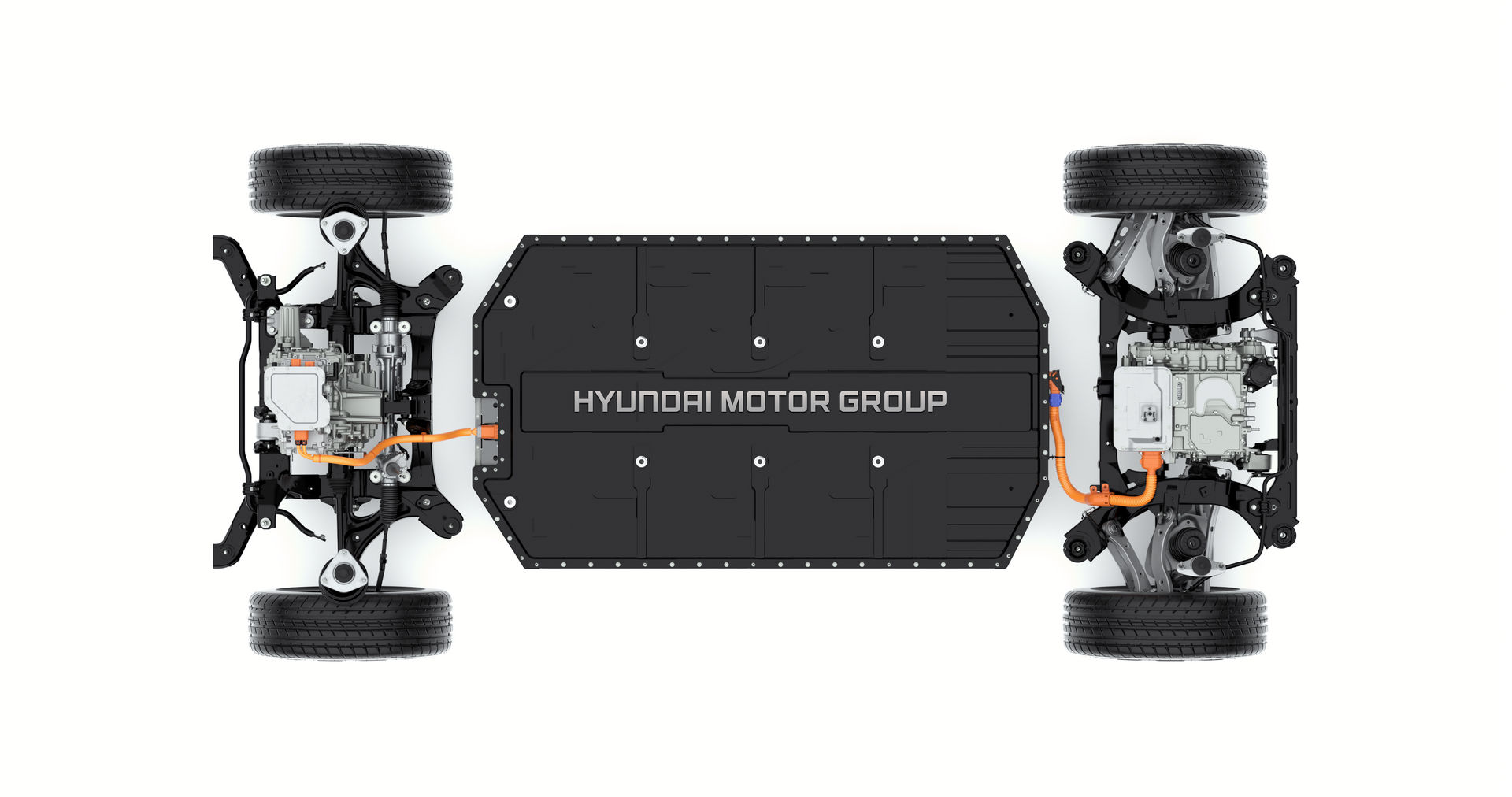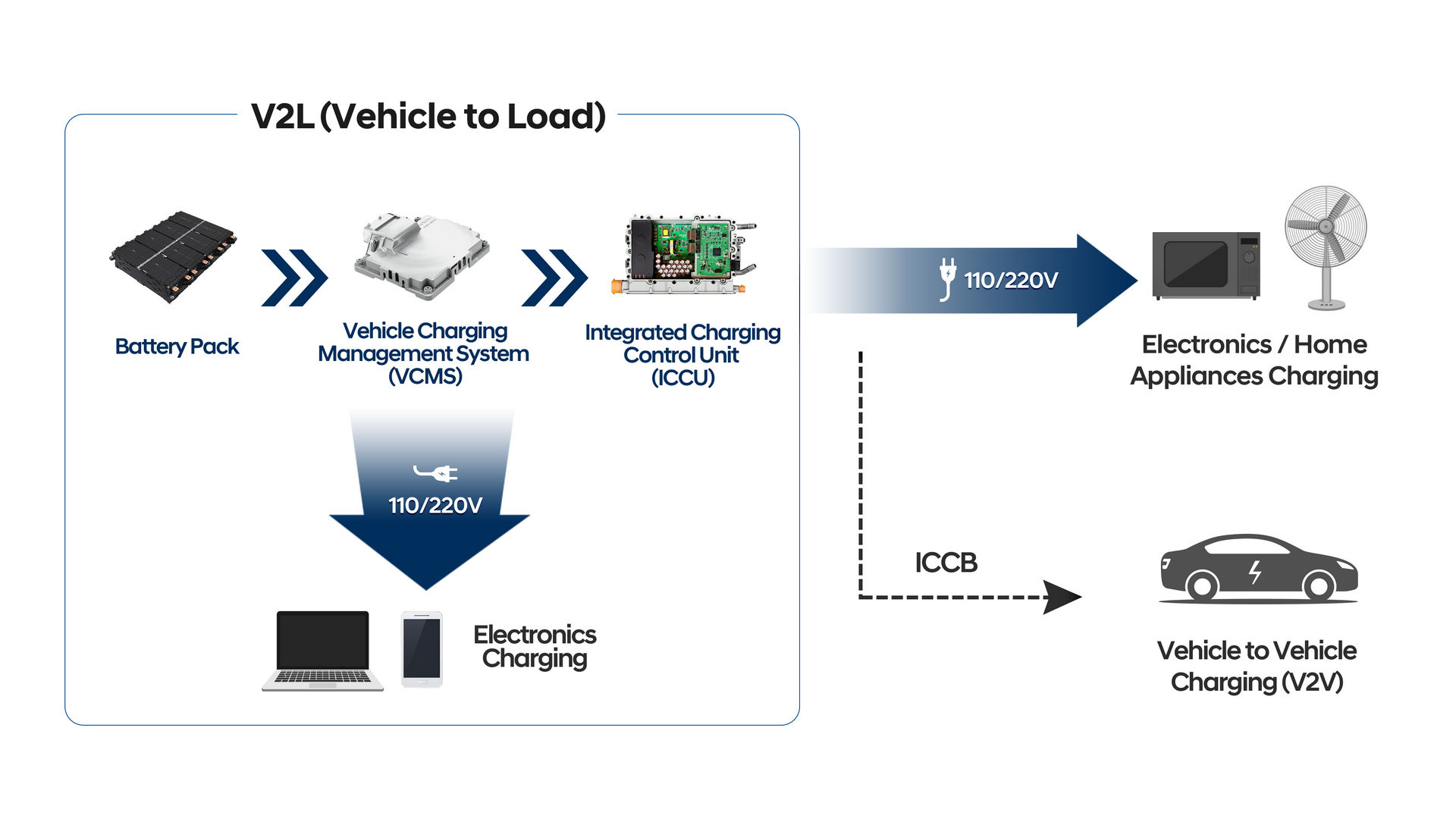The Hyundai Motor Group has unveiled its new Electric-Global Modular Platform (E-GMP) that will underpin a plethora of electric vehicles from both Hyundai and Kia.
The modular platform can be used across most vehicle segments, including sedans, SUVs and CUVs and has been engineered to offer excellent cornering performance and driving stability at high speeds. It includes a five-link rear suspension system and the world’s first integrated drive axle that combines wheel bearings with the driveshaft to transmit power to the wheels while enhancing ride comfort and handling stability.
Read Also: New Hyundai Mistra Bows In China With Electric Variant That Can Travel 323 Miles
The battery pack is mounted between the front and rear axles and is the most power-dense unit the Hyundai Motor Group has created. Interestingly, the E-GMP platform is a rear-wheel drive platform, meaning future vehicles that use it will be offered in rear- and all-wheel drive configurations. All-wheel drive ones include an EV transmission disconnector that can control the connection between the additional motor and the front wheels and switch between rear-and all-wheel drive modes to enhance efficiency and provide the ideal level of performance depending on driving conditions.
As standard, the E-GMP platform offers 800V charging capability and also enables 400V charging without the need for additional components or adapters. It also supports charging speeds of up to 350 kWh, and an EV based on this platform can have a range as high as 310 miles (500 km) on the WLTP testing cycle. The battery can charge to 80 per cent capacity in just 18 minutes.
Hyundai’s new platform also has a vehicle-to-load function that means the battery pack can charge other 110V and 220V electrical equipment and even be used to charge another EV.
This architecture will underpin Hyundai Motor Group’s plans to launch 23 electrified models, including 11 battery electric vehicles. It will be first used by the all-electric Ioniq 5 next year and an upcoming EV from Kia that will also be be unveiled in 2021.



